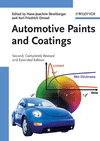Iranian Researchers Create Nanostructured Crack-Free Ceramic Coating

TEHRAN, Iran - Researchers from Sharif University of Technology, Tehran, Iran, in association with researchers from Laser and Optic Research Center, have produced a crack-free ceramic coating using nanotechnology. The coating is nanostructured and dense and can be produced through a simple and cost-effective method. Results of the research have applications in various industries, including electronics, optics and photonics.
The produced coating is very thin and nanostructured with a thickness of about 30 nm. Due to the lack of cracks in its surface, the performance of the coating in optical passing or the capacity of multilayered capacitors made of the coating has increased significantly. In addition, an increase in the lifetime of the coating and reduction in production costs are among the other advantages offered by the crack-free coating. The production method has potential to be introduced as a general approach for the production of various ultrathin, nanostructured and crack-free coatings.
The research shows that a controlled step should be carried out before the drying to produce crack-free coatings. In this stage, the coating is first placed in a closed environment at the equilibrium vapor pressure so its volatile compounds exit gradually. This way, no crack is formed in the coating surface. Next, the coating is dried and cooked.
The modifying method proposed in the research can be easily commercialized since it is executable only by adding one additional step to previous technologies.
Among the advantages of the sol-gel method used in this research are a low-temperature production process, homogeneity at the atomic scale, simple control over the desirable products, and the lack of pollution and impurity in the products.
Results of the research were published in Ceramics International, vol. 40, issue 6, January 2014, pp. 8613-8619.
Looking for a reprint of this article?
From high-res PDFs to custom plaques, order your copy today!





